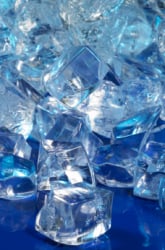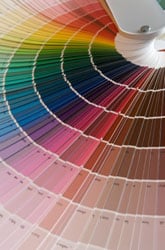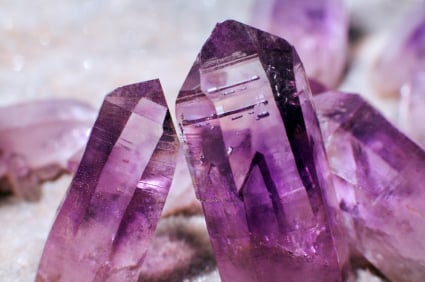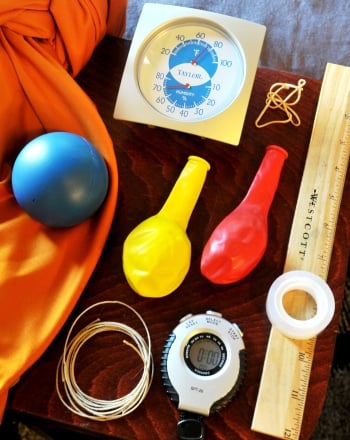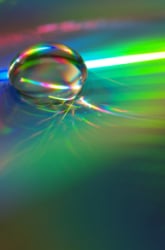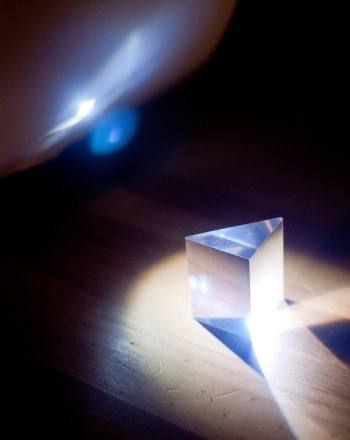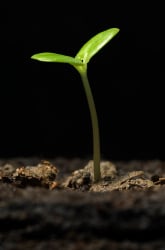Science project
Can Hydrogel Crystals be Used as a Sensitive Humidity Indicator?
Type
Physical Science & Meteorology
Grade Level
Difficulty of Project
Cost (Approximate Cost)
$12.00 - Excluding the cost of the Tri-fold cardboard display board
Safety Issues
Investigator should not ingest the crystals or drink the liquids associated with the activity. The crystals used in the project are extremely slippery when spilled. Never flush or pour these crystals down the drain, crystal swelling could possibly clog drainpipes. The supervising adult should discuss the warnings and safety information with the child or children before commencing the activity.
Material Availability
The materials required for this project are readily available and inexpensive.
Approximate Time Required to Complete the Project
1 day to complete the activity once the materials are secured and setup. Also between 1 and 2 hours to prepare the Tri-fold board display.
Objective
Hydrogel superabsorbent polymer crystals are able to soak up as much as 500 times their weight in water! The research aspect of this science fair project is to determine if these crystals will absorb water vapor that results from high atmospheric humidity?
This science fair project focuses on a special kind of polymer called a hydrogel superabsorbent crystal which absorbs water, swelling to many times its original size. This water absorption ability will be tested by determining if these crystals are sensitive enough to remove water vapor from the air and grow. The amount of humidity in the air will be determined based on the size of crystal growth. From the observations made a data table comparing the size of crystal growth to relative humidity will be generated and results displayed in the form of a graph.
The possible practical application from the results of this investigation is use of hydrogel crystal composite material as an economical alternative to traditional humidity sensors.
Materials and Equipment / Ingredients
- Hydrogel superabsorbent crystals
- 8 oz clear sealable plastic bag or container with a lid
- Metric ruler
- Optional: hygrometer or humidity indicator card
With the possible exception of the crystals, all the other items can be purchased from the local hardware, homebuilding or garden supply store. Also, a Tri-fold cardboard display board can be purchased from an art & crafts supply store.
The hydrogel crystals can be purchased either locally from a garden supply store or online. Fortunately the price has been coming down. Science in A Bag charges $10 plus free shipping for a pack of these crystals. They may also be ordered from www.teacherssource.com, or Nasco Science.
Introduction
Relative humidity is a term used to describe the amount of water vapor that exists in the air it depends on the temperature of the air, as warm air can hold more moisture than cold air. A relative humidity of 100 percent indicates that the air is holding all the water it can at a given temperature and any additional moisture at that point will result in condensation. To determine the relative humidity in the air a device called a hygrometer is used.
A hydrogel crystal (sometimes called a “Disappearing crystal,” “Water Crystal,” “Superabsorbent gel,” etc) is a long chain of molecules bonded together to form a superabsorbent polymer, that does not dissolve, but forms a gel when placed in water and is often used in garden, landscape, and farming applications as a way of retaining moisture. Instead of dissolving, these crystals absorb water, swelling to many times their original size. The crystal is made up almost entirely of water. As they dry, water is slowly released to the soil. Some of these crystals can soak up as much as 500 times their weight in water! This superabsorbent characteristic makes hydrogel crystals useful as a possible humidity indicator.
As the young investigator will discover hydrogel crystals can absorb water vapor on days of high humidity and although the crystals will not change completely into a gel, the increase in size that they swell can give a good indication of the relative humidity on the day that they are used.
Digital photos can be taken during the experimenting process and/or images of hydrogel crystals can be downloaded from the Science in a Bag website for free and without copyright infringement issues.
The following sites offer down loadable images that can be used on the display board:
- http://img.alibaba.com/photo/235361811/super_absorbent_polymer.jpg
- http://farm4.static.flickr.com/3024/2551127025_27a33dbfd0_m.jpg
- http://archive.amol.org.au/recollections/img/photos/a1/sm3-1374.jpg
Research Questions
- What is a hydrogel superabsorbent polymer crystal?
- What is relative humidity and what is its relationship to weather?
- Will a hydrogel superabsorbent polymer crystal absorb water vapor from the air?
- Why was the hydrogel crystal kept in the sealed dry plastic container used as a control?
- What happens when the crystal gel dries out? Is the hydrogel crystal reusable?
- How does the hydrogel crystal compare to other humidity measuring devices?
Terms, Concepts and Questions to Start Background Research
Hydrogel crystal,crystal, polymer, control, relative humidity, and superabsorbent polymer
Experimental Procedure
- Conduct this experiment on a day in which the weather forecast is for high humidity.
- Measure the length of several crystals that will be used in this science fair project as shown in the illustration in Figure 1, and recorded the measurements. If a small kitchen food scale is available weigh several crystals instead or in addition to measuring their length.

- Place one or two hydrogel crystal into a clear dry sealable, plastic bag or container with a lid.
- Place one of two crystals in various locations inside and outside of the house. Do not place the crystals in direct sunlight.
- Allow the crystals to sit undisturbed for several hours or until there is a noticeable change in size and or appearance.
- Carefully measure the change in size (or mass if a kitchen scale was used). For a more scientifically accurate investigation the entire process should be repeated twice more. Record the results in a table similar to the one shown below.
- If there was a significant increase in the size and or mass of the crystal(s) this is an indication of high humidity, where as a small increase or no detectable change indicates either low or no humidity.
|
|
Initial Size/Mass of Crystal |
Final Size/Mass of Crystal |
Humidity (High, Low, None)
|
|
Control
|
|
|
|
|
Trial 1
|
|
|
|
|
Trial 2
|
|
|
|
|
Trial 3
|
|
|
|
- If a hygrometer or “Humidity Indicator Card” is available the investigator could augment this science fair project by comparing the increasing size (or mass) of the crystal(s) with the actual humidity in the air at various times during the day. A table similar to the one shown below can be used to display the results.
|
Time
|
Size/Mass of Control Crystal(s) |
Humidity |
Size/Mass of Test Crystal(s)
|
Humidity
|
|
0 hour
|
|
|
|
|
|
1st hour
|
|
|
|
|
|
2nd hour
|
|
|
|
|
|
3rd hour
|
|
|
|
|
|
4th hour
|
|
|
|
|
- Use the data in the table to plot a line or bar graph of percent relative humidity along the Y-axis verses the changes in crystal size or mass along the X-axis.
Bibliography
Title: The Kids' Book of Weather Forecasting, Authors: Mark Breen and Kathleen Friestad, Publisher: Williamson Books ISBN-13: 9780824968236 and ISBN: 0824968239
Title: Modern Superabsorbent Polymer Technology Authors: Fredric L. Buchholz (Editor), Andrew T. Graham (Editor) Publisher: Wiley-VCH, Inc., ISBN-10: 0471194115 and ISBN-13: 978-0471194118
This book is about superabsorbent polymers, how they are made, and to what purpose they are used with the technical developments and techniques needed to produce them. There is a special emphasis on the applications of superabsorbent polymers specifically within personal care items.
The material in the book is comprehensive, adult-level in scope and sequence however; the young investigator and his or her parents (teachers) can use this book as a general reference resource.
- What is Relative Humidity?
- Measuring relative humidity
- Super Absorbent Polymer
- How do polymer crystals work and why do they absorb so much water?
- How to make a Crystal Appear and Disappear?
Note: The Internet is dynamic; websites cited are subject to change without warning or notice!
Education.com provides the Science Fair Project Ideas for informational purposes only. Education.com does not make any guarantee or representation regarding the Science Fair Project Ideas and is not responsible or liable for any loss or damage, directly or indirectly, caused by your use of such information. By accessing the Science Fair Project Ideas, you waive and renounce any claims against Education.com that arise thereof. In addition, your access to Education.com's website and Science Fair Project Ideas is covered by Education.com's Privacy Policy and site Terms of Use, which include limitations on Education.com's liability.
Warning is hereby given that not all Project Ideas are appropriate for all individuals or in all circumstances. Implementation of any Science Project Idea should be undertaken only in appropriate settings and with appropriate parental or other supervision. Reading and following the safety precautions of all materials used in a project is the sole responsibility of each individual. For further information, consult your state's handbook of Science Safety.



